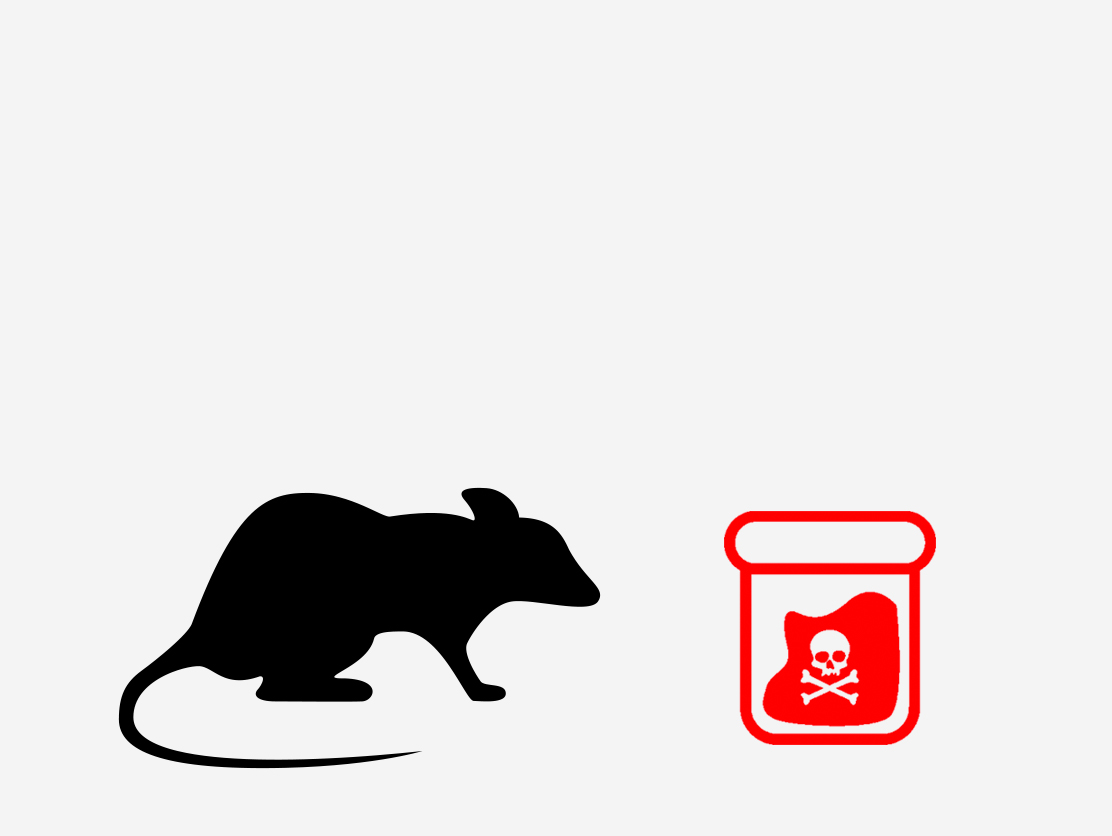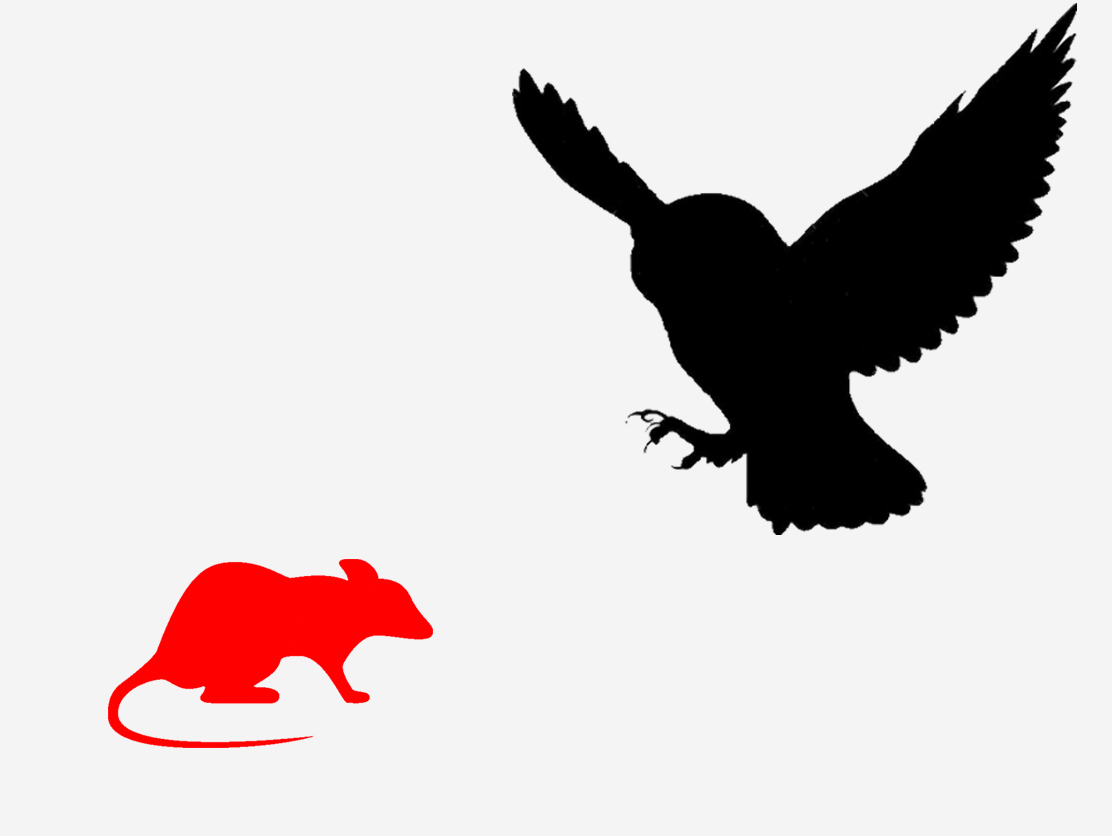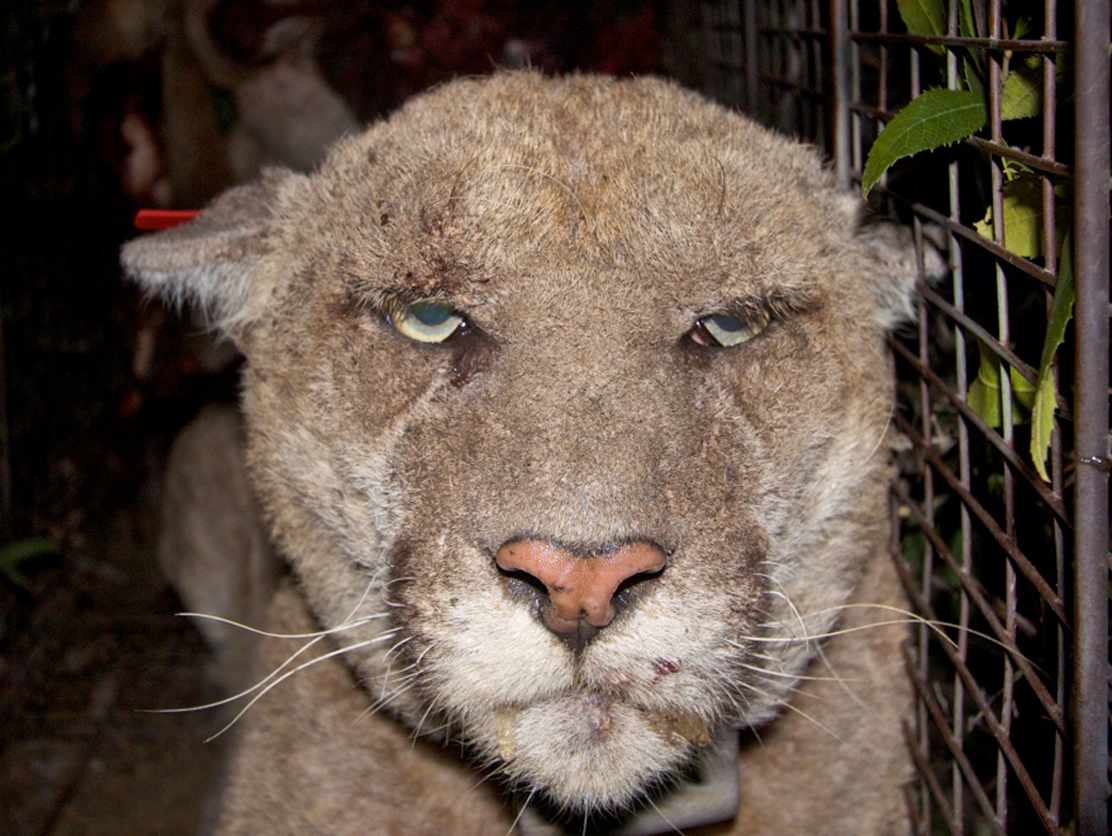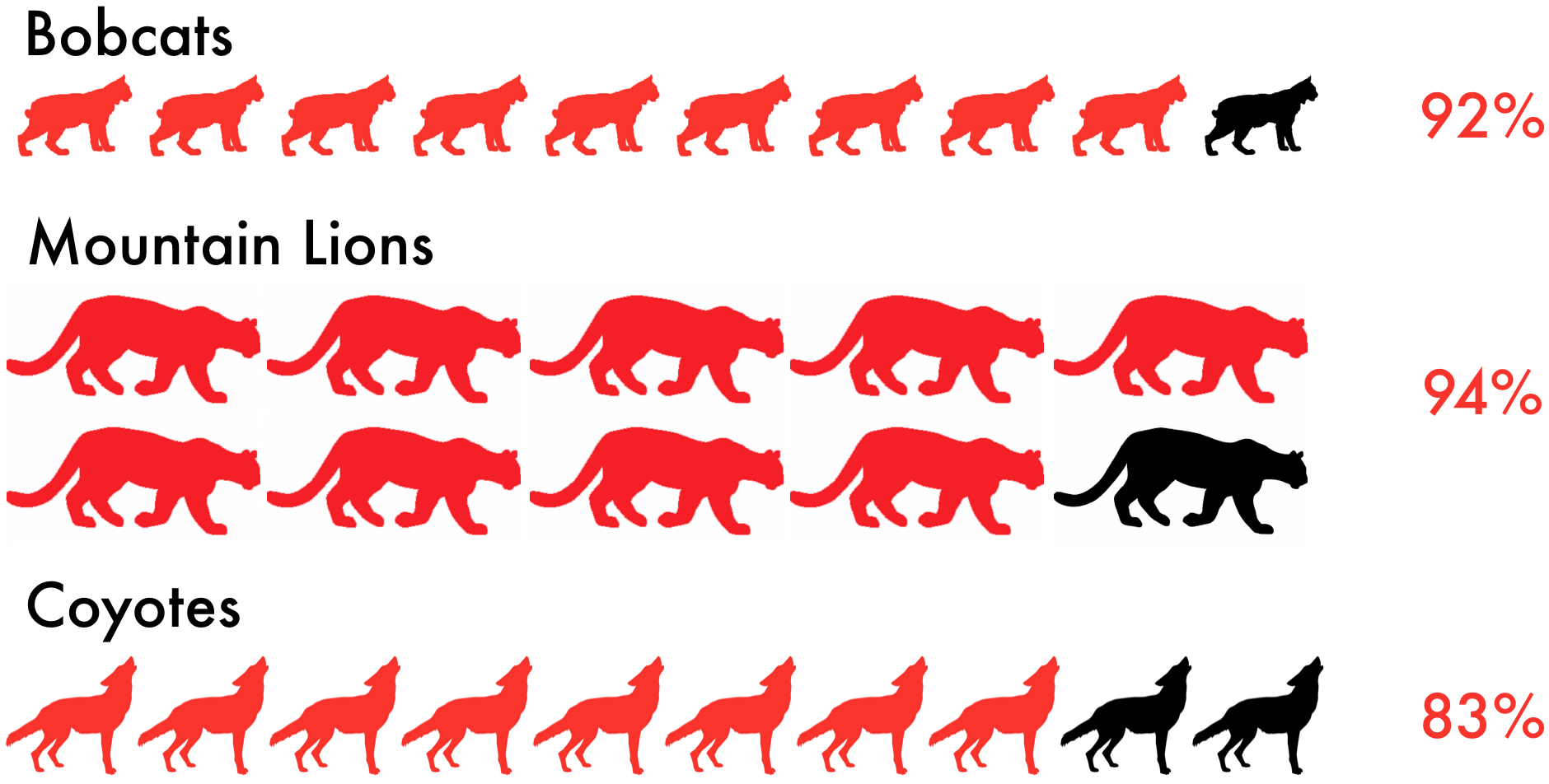When rats show up in homes or businesses, bait traps containing anticoagulant rodenticide (a.k.a. rat poison) are often placed in order to kill them. But researchers have discovered a devastating consequence of this practice...
Rat poison isn't just killing rats.
When a rat eats poison, it doesn’t die immediately.
It becomes slow and sluggish, making it easy prey for nearby predators.
The predator has now eaten a poisoned rat, becoming a victim of "secondary poisoning."
Secondary poisoning weakens the predator, leading to an increased risk of predation, automobile collisions, and diseases such as mange.
"Rosie" the coyote was rescued in Laurel Canyon and treated for rodenticide-induced mange and secondary infections.
Griffith Park's "P-22" mountain lion was caught and treated for mange as a result of exposure to rat poison. This treatment may have saved his life—many animals die from the effects of mange.
"P-34" mountain lion died in Malibu from internal bleeding. A necropsy found that she had been exposed to five different poison compounds.
Of the animals tested in the Santa Monica Mountains region, a high percentage tested positive for rodenticide exposure.
Percentage of animals in and around the Santa Monica Mountains with rat poison in their system. Statistics from Urban Carnivores and National Park Service.
Watch our short film to learn more about rodenticides.
What CLAW is Doing
In 2014, CLAW worked with LA City Council to successfully ban "second generation" (high toxicity) rodenticides from being used in all LA City Parks (For more info, see our formal position letter, the resulting motion, and news coverage.)
CLAW's Barn Owl Nesting Box Program is spreading the word about the dangers of rodenticides, while promoting a natural method of rodent control.
Read CLAW's letter of support for AB 1788, which placed a moratorium on second generation anticoagulant rodenticides in California. For more info on this bill, click here.
Read CLAW's letter of support for AB 1322, which could place a moratorium on first generation anticoagulant rodenticide difacinone in California. For more info on this bill, click here.
“Rodenticides are having a terrible impact on the wildlife in the mountains in and around Los Angeles. I’m pleased to be working with CLAW and looking into ways we can protect our mountain lions and bobcats and restore the natural balance of pest control in our wild areas.”
What You Can Do
Los Angeles Residents: Contact Mayor Bass and your City Council Member, and tell them rodenticides of any kind should be banned in parks and sensitive areas in the City of Los Angeles.
In Your Community
Attend your next community meeting (HOA, Residential Association, Neighborhood Council, school, religious organization or other community groups) to educate your friends and neighbors about the dangerous effects of rat poison.
Ask your community to take a formal stand to abandon the use of ALL anticoagulant rodenticides with a No Rodent Poison resolution.
For help on how these resolutions can be written, check out these examples:
Laurel Canyon Beverly Glen SMMC
Rodent Problems at Home?
Tell your pest control company you do not want them to use rat poison.
Seal up cracks and crevices where rats may be entering your home. Use 1/4" wire (not chicken wire) to cover holes.
Do not leave pet food outside. Clean up dropped fruit or any other food that may be attracting rodents to your home.
Ensure that garbage bins are secure.
Remove wood piles, cardboard boxes, tires, debris, and overgrown plants where rats may be nesting.
Remove tree limbs within 3 feet of roofs.
If necessary, use non-toxic lethal options like electric or mechanical rat traps. Do not leave these traps outside in the open, as other animals may become injured from them.
Do not use glue traps, as these are indiscriminate killers as well, and may end up catching a number of other animals besides rodents. Furthermore, predators may bring these glue trapped rodents back to their nest (such as the owl seen here) which can create a great danger for the animals and their young.











